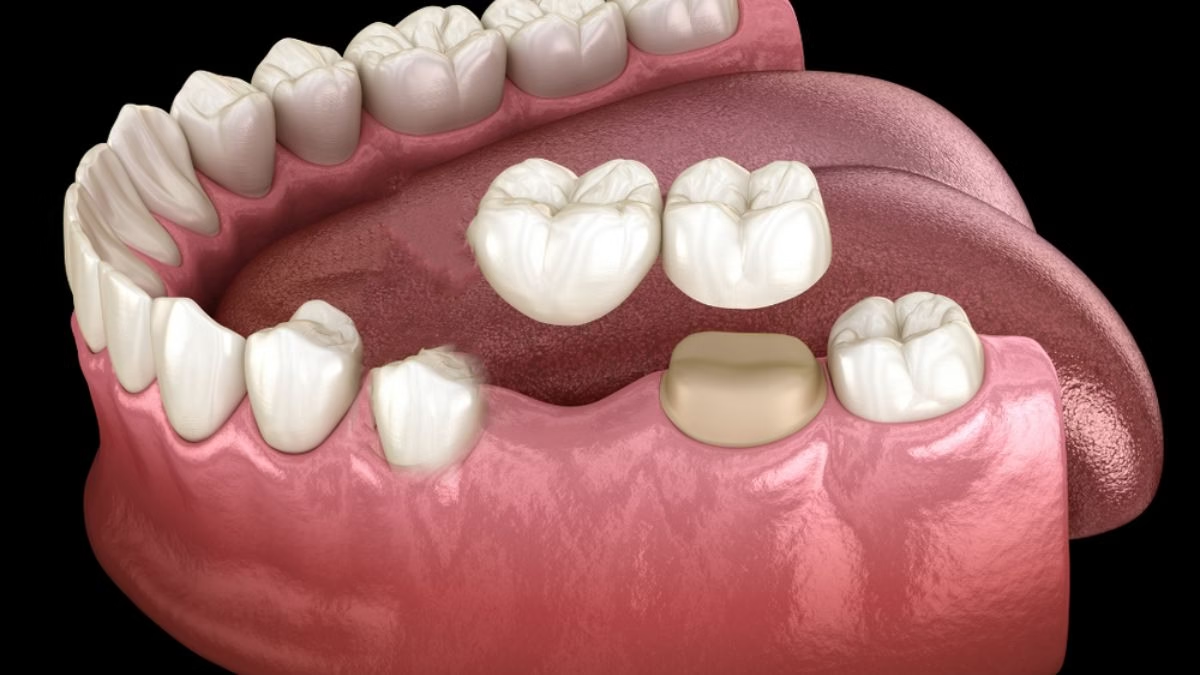Missing tooth is impacting your self-confidence, you may be checking out means to gain back a full smile. A cantilever Dental bridge is one possible option worth considering. This customized bridge can be an exceptional necessary to understand its auto mechanics and viability. Let’s take a closer check out what it requires and whether it’s the right fit for your demands.
Table of Contents
What is Cantilever Dental Bridges?
A cantilever dental bridge is a specialized fixed dental solution created to fill up the space left by a missing out on tooth. Unlike traditional bridges that rely on adjacent teeth on both sides of the void for assistance, a cantilever bridge is distinctively secured to a solitary all-natural tooth beside the missing out on tooth. This solitary anchor tooth offers the essential support for the bridge to span the gap, earning its name from the building idea is a structure that predicts outside from a solitary factor of support.
Just how Does a Cantilever Bridge Works?
In a cantilever bridge, tje dental practitioner prepares one adjacent tooth by reshaping it to fit a crown. This crown after that sustains an artificial tooth, called a pontic, which fills in the void where the missing tooth utilized to be. The pontic is developed to look and operate similar to an all-natural tooth.
When is Cantilever Dental Bridge used?
Just one side of the missing out on tooth has a surrounding tooth: This might be the instance if your back molar is missing, and there’s no other tooth beside it.
Tooth framework is limited on both sides of the gap: For instance, a person with only one steady tooth left in the area might still have the ability to obtain a cantilever bridge.
Oral visual appeals issue in the front teeth: They can likewise be a good solution for front teeth where chewing stress is minimal.
What Are tjhe Benefits and drawbacks of a Cantilever Dental Bridge?
As with any kind of oral treatment, cantilever bridges come with both benefits and negative aspects.
Benefits Cantilever Dental Bridge
Less Tooth Preparation: Considering that it just needs one tooth to anchor the bridge, there’s less improving included.
Minimally Intrusive: A cantilever bridge is a non-surgical solution, unlike implants.
Visual Enhancement: This type of bridge can make your smile appearance natural and full once more.
Faster Refine: The whole proceedure is typically quicker than other alternatives, like implants, which might require months of healing.
Drawbacks of a Cantilever Dental Bridge
Possible for Helping to loosen: Because the bridge is anchored on one side, tjhe tooth supporting it might experience anxiety and, gradually, can loosen.
Higher Threat of Fracture or Damage: The lack of assistance on both sides indicates it’s more susceptible, especially if placed in high-stress areas, like back molars.
Not Appropriate for All Cases: Cantilever bridges aren’t the best alternative for every person, especially if your teeth and periodontals aren’t in good health.
The Procedure: What to Expect
Initial Examination: Your dental expert will analyze whether a cantilever bridge is a suitable choice. They’ll review the health of the nearby tooth, your gum tissues, anbd the area where the bridge would certainly be placed.
Tooth Prep Work and Impressions: Once the plan is in area, the nearby tooth is prepped to hold the crown. Then, your dentist will certainly take perceptions of your teeth to produce a customized bridge.
Your dental professional might pick to place a short-term bridge to safeguard the tooth thta has been prepared while you are waiting for the custom-made bridge to be made.
Safeguarding the Bridge: After the bespoke bridge is crafted an accurate fit and a smooth mix with your bordering teeth.
Keeping a Cantilever Bridge: Essential Oral Treatment Behaviors
To keep your cantilever bridge in optimal condition, it’s important to exercise attentive oral health, equally as you would withh your naturual teeth. Here are some valuable guidelines to comply with:
Brush Twice Daily: Make use of a soft-bristled toothbrush and toothpaste to maintain the bridge and bordering area clean.
Floss Daily: It’s vital to clean around and under the pontic utilizing floss or a water flosser to avoid plaque accumulation.
Avoid Eating on Hard Foods: While cantilever bridges are durable, eating ice, hard candies, or various other challenging foods could harm them.
Normal Dental Check-ups: Your dentist will look at the bridge throughout routine exams and make sure it’s working well.
How much Cantilever Dental Bridge cost?
A cantilever dental bridge typically costs $2,000 to $5,000 per tooth. High-end materials like all-porcelain or zirconia can push the price above $5,000. Costs may vary based on the location, material, and dentist experience. Insurance may cover around 50%, especially if the procedure is medically necessary. Regular maintenance and possible replacements every 5–15 years should also be factored in. For a precise estimate, consult your dentist.
Is a Cantilever Dental Bridge Right for You?
If you’re missing a tooth and have a healthy and balanced surrounding tooth, a cantilever bridge could be a practical option. However, it’s important to evaluate the pros and cons and discuss it with your dental professional. Sometimes, a typical bridge or a dental implant might be much better fit to your requirements.
Final Thought
In conclusion, opting for a cantilever oral bridge can enhance your smile and positively effect your life. This option is particularly beneficial for people that are unable or select to undertake implant treatments, or for those lacking the essentual structure for a traditional bridge. Remember, maintaining your bridge via great dental treatment techniques and constant oral brows through is crucial for its longevity.
Consult your dental expert to talk about whether a cantilever bridge is a suitable choice for your dental needs andd way of life.
FAQs
How long do cantilever bridges last?
Cantilever Dental bridges last for 5-7 years.
How many teeth can a cantilever bridge hold?
Cantilever Bridge is attached to single tooth.
Also Read Calculus Bridge : Causes, Side Effects, Prevention

